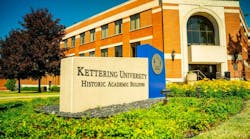Jobs in science, technology, engineering and mathematics (STEM) disciplines will grow by more than 10% over this decade, according to the U.S. Bureau of Labor Statistics.
That’s a 40% higher increase than what’s projected for non-STEM jobs—a pretty enticing statistic, especially when the median average wage for STEM workers was almost $90,000 in 2020, compared to $40,000 for non-STEM.
Also read: STEM update: Austin Park 4 years after receiving Acopian Power Supply Scholarship
But, to take full economic advantage of a STEM career, where should you live, whether it’s for your own career or to be near your children and grandchildren as they relocate for high-paying jobs.
According to WalletHub’s 2022 report on the Best & Worst Metro Areas for STEM Professionals, Harrisburg, Pennsylvania, has the most per-capita overall STEM job openings for STEM graduates, with 232.62.
Remarkably, that’s more than 34 times higher than in Deltona, Florida, the metro area with the fewest at 6.78.
San Jose, California, has the highest average monthly earnings for new employees in STEM industries at $12,872, almost three times higher than in Little Rock, Arkansas, the metro area with the lowest at $4,570.
The highest share of all workers in STEM occupations also goes to San Jose, where more than 22% hold STEM-related jobs. The lowest percentage of STEM workers can be found in McAllen, Texas, where just 1.59% of employees are in STEM-related positions.
While San Jose is a hotbed for tech, it’s also an expensive place to live. If you adjust for the cost of living, Palm Bay, Florida, has the highest median annual wage for STEM workers at $101,587, which is 2.4 times higher than in Honolulu, the metro area with the lowest at $42,120.
WalletHub compared the 100 biggest metro areas across 19 metrics, including data set ranges from per-capita job openings for STEM graduates to median wage growth for STEM workers in each MSA.
According to the results, the top 10 metro areas for STEM professionals, in order, were Seattle; Austin, Texas; Boston; Madison, Wisconsin; Minneapolis; Atlanta; Pittsburgh; San Francisco; Salt Lake City; and Orlando, Florida.
The survey compared the 100 most populated U.S. metropolitan statistical areas across three dimensions—professional opportunities, STEM-friendliness and quality of life.






